- Most collaboration software creates digital chaos – messages everywhere, no clear workflows, and constant “what’s the status?” questions that waste 2+ hours daily
- Tools like Slack and Teams excel at real-time chat but turn into notification nightmares where important decisions get buried in GIF reactions and water cooler talk
- Project management platforms (Asana, Monday) manage tasks well but lack the structure for repeatable processes – every project starts from scratch
- What if your team could actually follow clear, automated workflows instead of drowning in ad-hoc messages? Worth exploring how others escaped the chaos
Every collaboration tool promises to revolutionize how your team works. Yet here we are in 2025, and most teams still waste 20+ hours weekly on status updates, searching for information, and clarifying who’s doing what.
Sounds familiar? You’re not alone.
After testing dozens of collaboration platforms and analyzing thousands of user reviews, one pattern keeps emerging: these tools often create more chaos than they solve. Sure, they connect people. But connection without structure? That’s just organized confusion.
Let me show you exactly what works, what doesn’t, and why most teams are approaching collaboration completely wrong.
The uncomfortable truth about collaboration software
Here’s what vendors won’t tell you: collaboration software isn’t actually about collaboration. It’s about managing chaos.
Think about your typical workday. You’ve got Slack pinging every 3 minutes. Teams notifications stacking up. Asana tasks that nobody updates. WhatsApp groups for “urgent” stuff. And somewhere in that digital noise, actual work needs to happen.
The average knowledge worker checks communication tools every 6 minutes. That’s not collaboration – that’s interrupt-driven insanity.
But before we dive into specific tools, let’s be clear about what collaboration software actually does:
- Creates digital spaces for communication (usually too many)
- Allows file sharing and co-editing (when you can find the right version)
- Provides task management (that people rarely update)
- Enables video calls (that could’ve been emails)
- Generates notifications (endless, endless notifications)
Notice what’s missing? Structure. Process. Clarity about who does what, when, and how.
That’s why 73% of teams using collaboration software still rely on email for important decisions. The tools create activity, not productivity.
Eight collaboration tools everyone’s using (and their hidden problems)
Let’s examine the most popular collaboration platforms honestly – including the frustrations users rarely discuss publicly.
1. Slack: The productivity paradox
Slack transformed business communication when it launched, reaching a $27 billion valuation by making work chat feel fun. Over 20 million people use it daily.
What Slack does well:
- Instant messaging that actually works across devices
- Channel organization for different topics and teams
- Excellent search functionality (when you remember the right keywords)
- Thousands of integrations with other tools
- Threaded conversations to reduce noise (theoretically)
The reality check:
According to user reviews on G2, Slack creates significant problems most teams don’t anticipate. One engineering manager noted: “The product uses a lot of computer resources, which makes computers really slow. Having GIF emojis in chat, even if the product is in the background, uses a lot of CPU resource.”(Source: G2)
The notification overload is real. Users report that “When there are many people in a chat, it can get messy, and users sometimes get too many alerts. It can also be hard to find old messages if you don’t remember the exact words you’re looking for.”(Source: Capterra)
But here’s the killer issue: Slack doesn’t differentiate between chat and actual work. Everything looks the same – whether it’s a critical approval request or someone sharing cat memes. One frustrated user complained: “DirectMessage groups are somewhat untenable at larger volumes, especially when these groups contain similar members. They all look the same.”
The monthly cost: $7.25-$12.50 per user. For a 50-person team, that’s $4,500-$7,500 annually for what amounts to a glorified chat room.
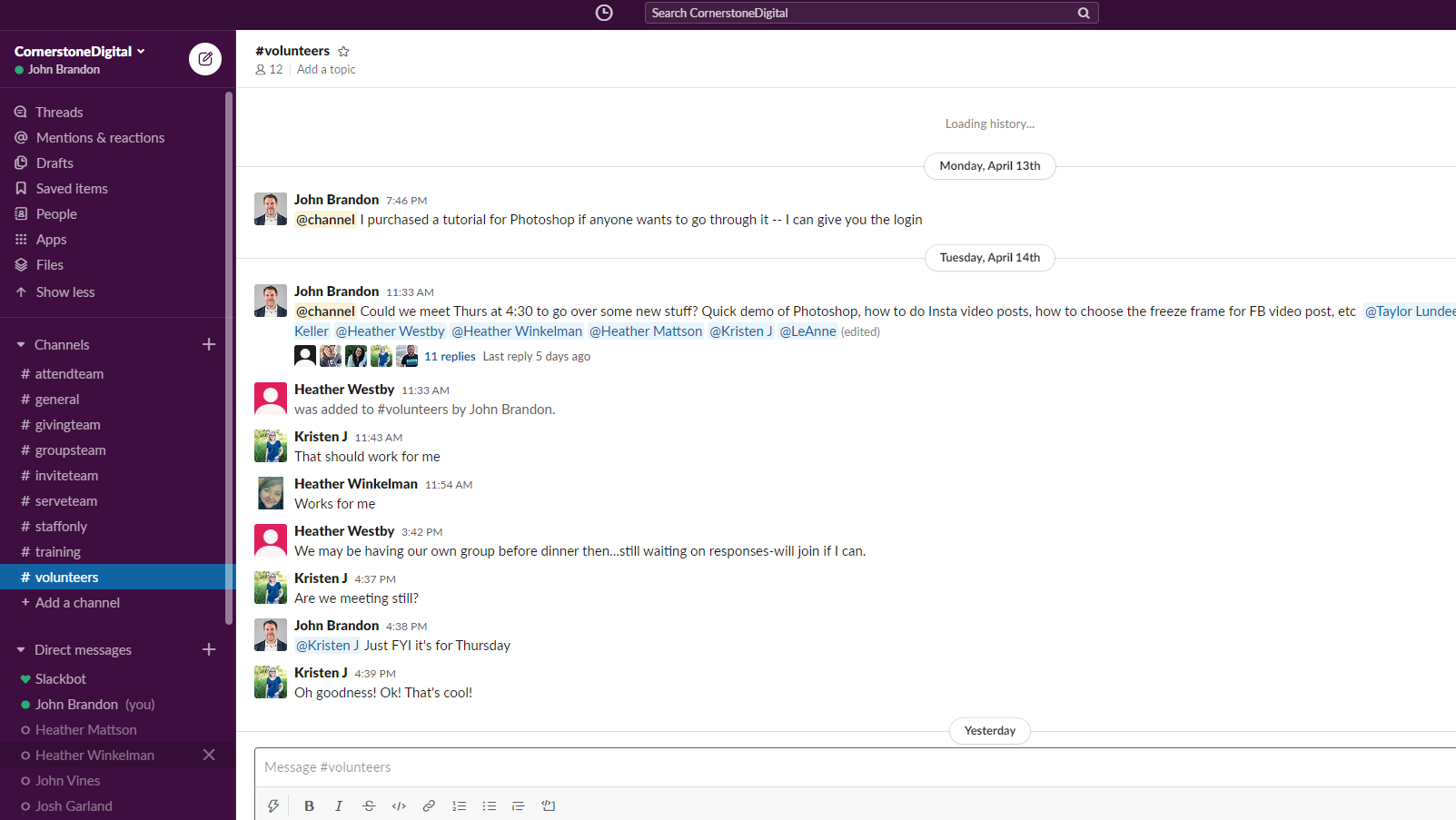
Real Slack interface – channels multiply quickly leading to notification chaos
Verdict: Slack excels at real-time communication but fails at creating structured workflows. Great for chatting, terrible for actually getting things done systematically.
2. Microsoft Teams: The forced marriage
Microsoft Teams comes bundled with Office 365, making it the default choice for many enterprises. Over 280 million people use it because, well, it’s already there.
What Teams does well:
- Deep integration with Microsoft Office suite
- Video conferencing that mostly works
- File storage through SharePoint (if you can navigate it)
- Included with existing Microsoft licenses
- Guest access for external collaboration
The reality check:
Teams suffers from Microsoft’s classic problem: trying to do everything, excelling at nothing. Users consistently report performance issues. One IT director shared: “Teams is incredibly resource-heavy. It regularly consumes 1GB+ of RAM just sitting idle. Our older machines simply can’t handle it.”
The user interface confuses even experienced users. A project manager complained on Reddit: “Finding files in Teams is a nightmare. Is it in Files? SharePoint? OneDrive? Chat attachments? Who knows!”
The notification system is equally problematic. You’ll get pinged for channel mentions, direct messages, likes, replies, and about 15 other things – with no intelligent filtering. Many users report missing important messages in the noise.
The hidden cost: While “included” with Office 365, the real cost is in lost productivity. Studies show employees spend 30+ minutes daily just managing Teams notifications and finding files.
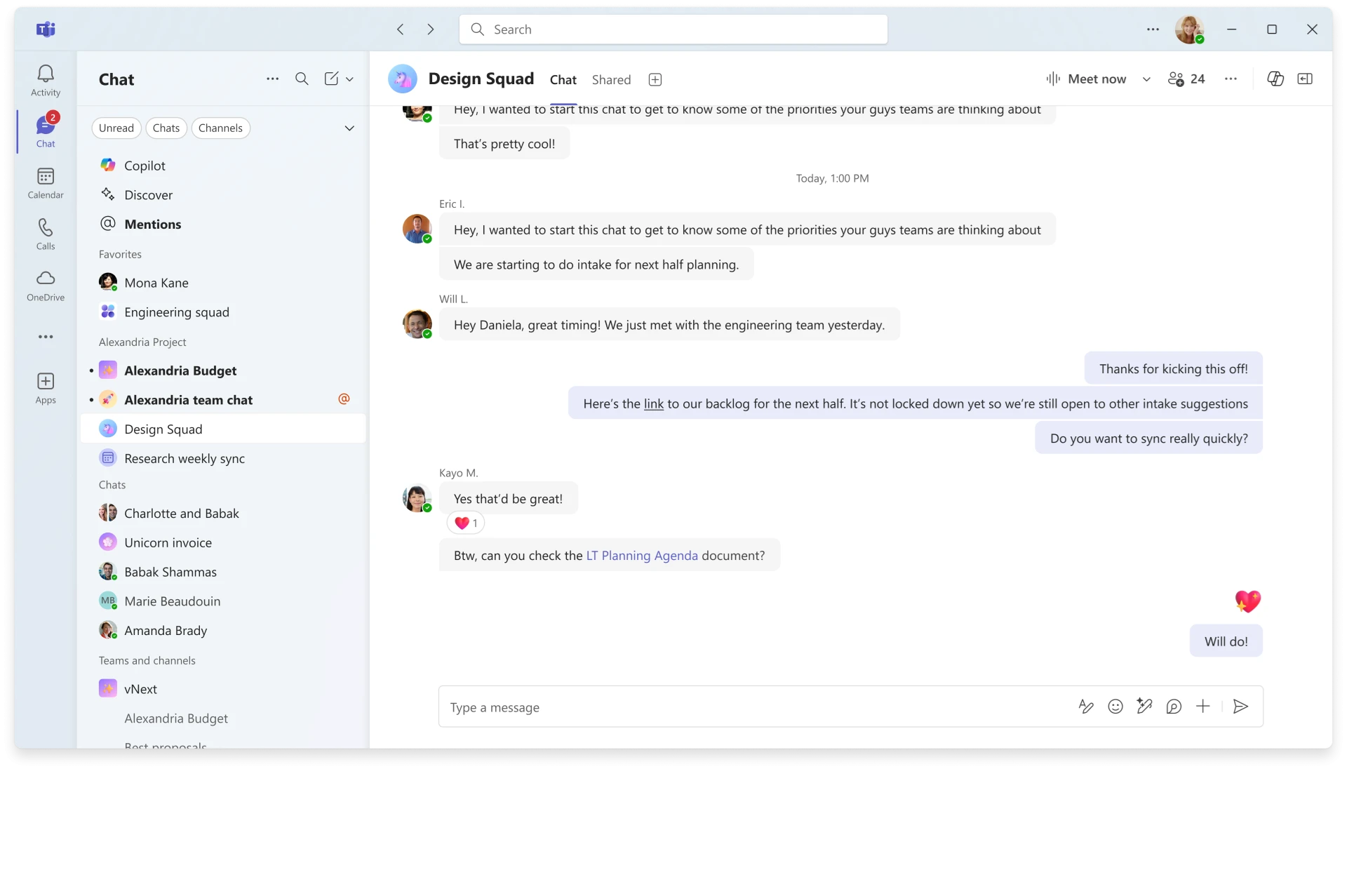
Microsoft Teams new unified interface – attempting to simplify but still overwhelming
Verdict: Teams works if you’re already locked into the Microsoft ecosystem. But it’s collaboration software designed by committee – functional but frustrating.
3. Basecamp: The stubborn grandfather
Basecamp has been around since 2004, making it ancient in software years. They’ve stubbornly refused to modernize, claiming simplicity is a feature.
What Basecamp does well:
- Dead simple interface anyone can understand
- Opinionated workflow that reduces options
- Hill Charts for visual progress tracking
- Campfires for casual chat
- Check-in questions for team updates
The reality check:
Basecamp feels like collaboration software from 2004 because, fundamentally, it is. Users on Capterra note: “It lacks real-time collaboration features that are standard everywhere else. No live document editing, no instant messaging, no presence indicators.”(Source: Capterra)
The bigger issue? Basecamp actively resists features users want. No Gantt charts. No time tracking. No custom fields. No workflow automation. Their philosophy is “you’ll work our way or not at all.”
One frustrated reviewer wrote: “Basecamp is ridiculously rigid. You can’t customize anything. Every project looks identical. There’s no way to adapt it to how we actually work.”
The cost surprise: $99/month flat rate sounds great until you realize you’re paying for 1990s functionality in 2025.
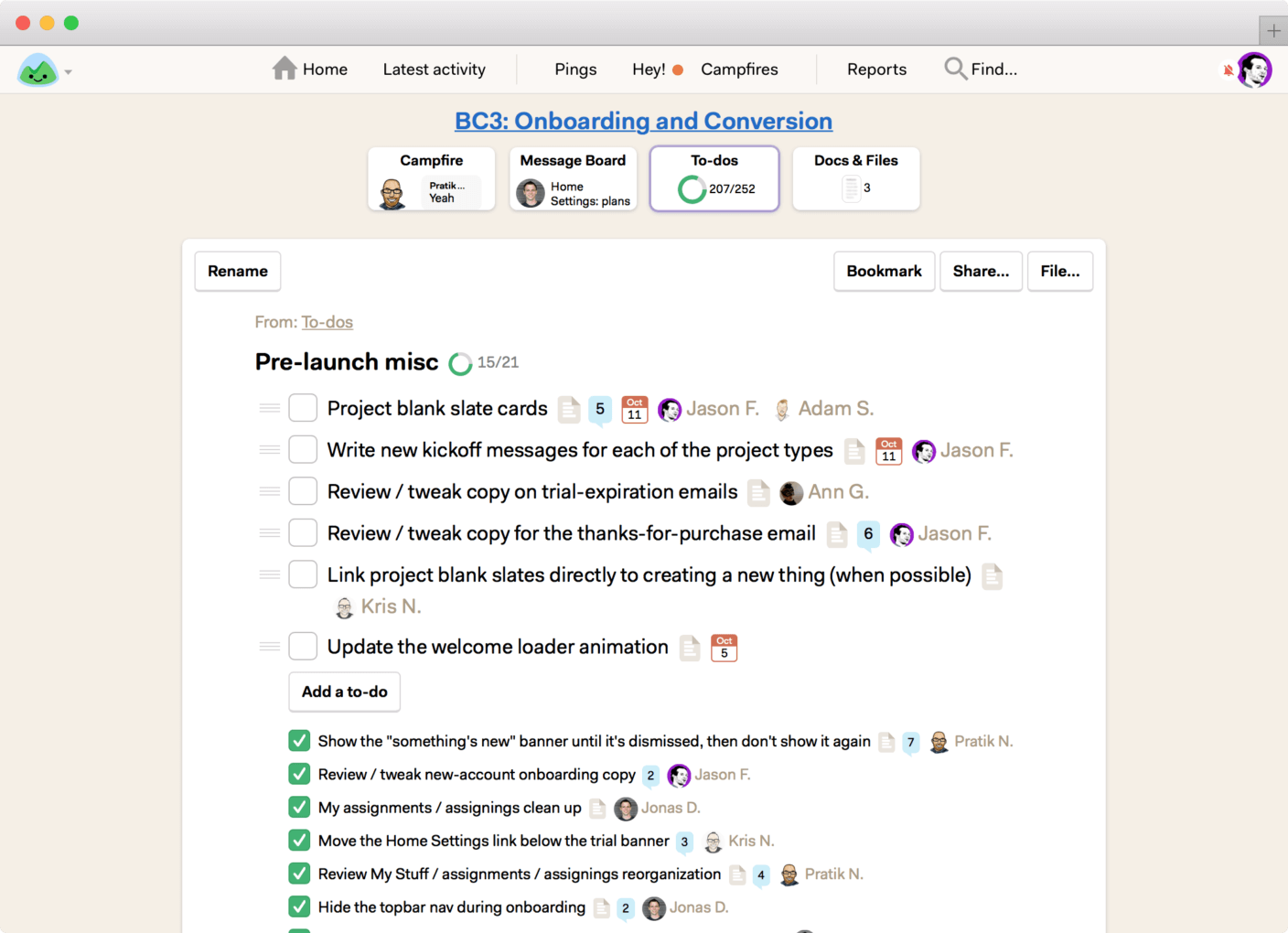
Basecamp – stubbornly unchanged and proudly limited since 2004
Verdict: Basecamp works for teams who want extreme simplicity. But that simplicity becomes a straitjacket when you need actual functionality.
4. Trello: The digital sticky note wall
Trello popularized the Kanban board approach, turning project management into a visual card game. Atlassian acquired it for $425 million, and millions still swear by its simplicity.
What Trello does well:
- Visual boards that anyone understands instantly
- Drag-and-drop simplicity
- Power-Ups for added functionality
- Butler automation for repetitive tasks
- Generous free tier
The reality check:
Trello is fantastic until your project gets complex. Then it falls apart. As one project manager noted on G2: “Trello becomes unwieldy fast. Once you have more than 50 cards on a board, finding anything is impossible. There’s no good way to see dependencies or timelines.”(Learn more about Trello’s limitations)
The notification problem is severe. One reviewer complained: “Notifications can get overwhelming. Every card movement, comment, due date, and attachment triggers an alert. I had to turn them all off, which means I miss actually important updates.”
But the fundamental issue? Trello only handles one-off projects. There’s no concept of recurring processes or standard workflows. Every board starts from scratch. A operations manager shared: “We do the same client onboarding process 50 times a month. In Trello, that means manually creating 50 identical boards. It’s insane.”
The scaling cost: Starts free, then $5-$17.50 per user monthly. But the real cost is the manual effort required for everything.
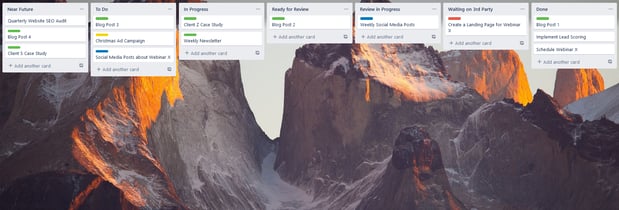
Trello board becomes unmanageable as cards and lists multiply
Verdict: Trello works beautifully for simple, visual projects. It fails completely for recurring processes or complex workflows.
5. Asana: The feature avalanche
Created by Facebook co-founder Dustin Moskovitz, Asana aimed to be the ultimate work management platform. It’s used by over 100,000 paying organizations.
What Asana does well:
- Multiple project views (List, Board, Timeline, Calendar)
- Robust task dependencies
- Custom fields and templates
- Portfolios for project oversight
- Workflow automation rules
The reality check:
Asana suffers from feature creep. They’ve added so much functionality that finding what you need becomes a job itself. A product manager at a tech startup shared: “Asana is overwhelmingly complex. We spent three months trying to configure it properly and still only use maybe 20% of its features.”(Compare with alternatives)
Users consistently complain about the learning curve. From Capterra: “The interface is cluttered and confusing. There are so many ways to do the same thing that team members do it differently, creating inconsistency.”(Source: Capterra)
The mobile experience is particularly frustrating. One reviewer noted: “The mobile app is basically useless for anything beyond checking tasks. Try creating a project or adjusting timelines on your phone – good luck.”
Performance degrades with scale. Teams report that once you have hundreds of projects, Asana slows to a crawl. Search becomes unreliable. Load times increase. One user mentioned: “We had to archive old projects constantly just to keep Asana responsive.”
The premium pricing: $10.99-$24.99 per user monthly. For advanced features like custom fields (!), you’re looking at the higher tiers.
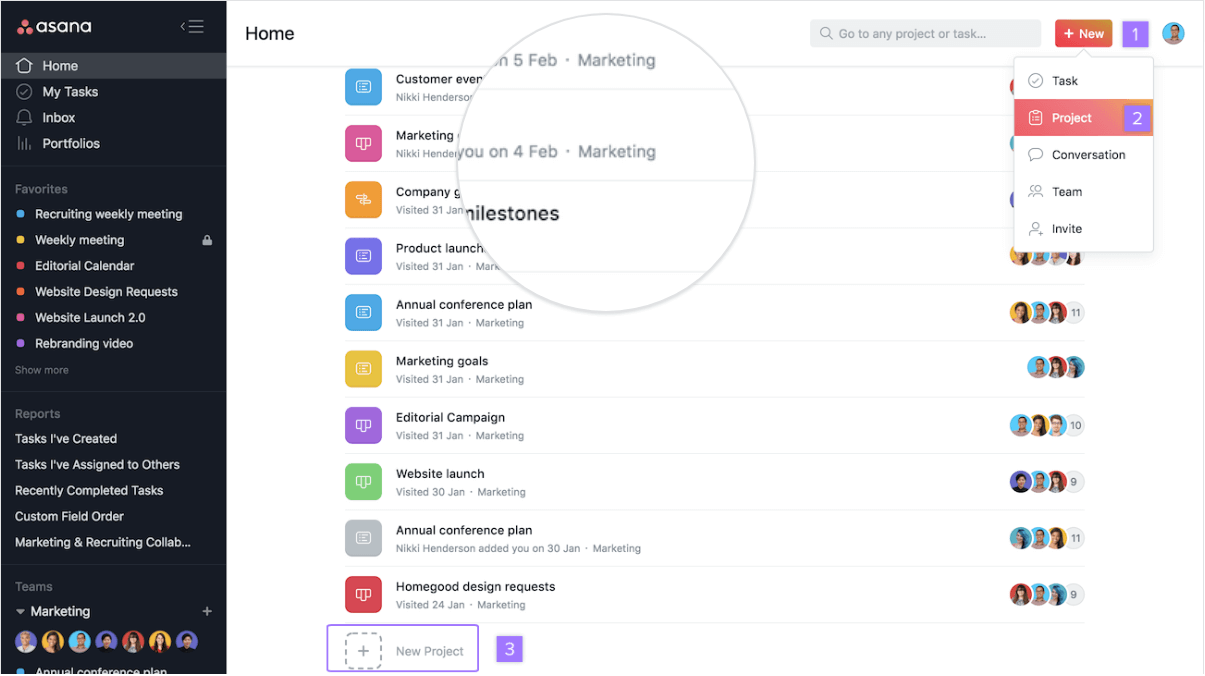
Asana’s feature overload – analysis paralysis in action
Verdict: Asana tries to be everything to everyone, resulting in a complex tool that’s overkill for most teams yet still lacks process automation.
6. Monday.com: The colorful confusion
Monday.com (formerly dapulse) positioned itself as the friendly, colorful alternative to boring project management. Their aggressive marketing worked – they’re now publicly traded.
What Monday does well:
- Colorful, engaging interface
- Extensive customization options
- 200+ templates to start from
- Strong reporting and dashboards
- Multiple visualization options
The reality check:
Monday’s strength – flexibility – becomes its weakness. Users report spending weeks just setting it up. One operations director complained: “Monday.com is like getting a box of Legos without instructions. Sure, you can build anything, but first you need to figure out what you’re building and how.”(See how it compares)
The pricing model frustrates many users. A reviewer on G2 noted: “They nickel-and-dime you for everything. Time tracking? Extra. Gantt charts? Extra. Guest access? Extra. The advertised price is basically useless.”
Performance issues plague larger implementations. From Capterra: “Once we hit about 10,000 items across our boards, Monday became painfully slow. Filters would take 30+ seconds to apply. Sometimes the whole system would just freeze.”
The mobile app receives particular criticism: “The mobile experience is an afterthought. You can view things, but try actually working from your phone – it’s nearly impossible.”
The real cost: Starts at $8 per user monthly but quickly jumps to $16-$24 for useful features. Annual commitment required for reasonable pricing.

Monday.com interface – colorful but overwhelming with too many customization options
Verdict: Monday.com looks impressive in demos but becomes unwieldy in practice. Too much flexibility without enough guidance.
7. ClickUp: The everything app
ClickUp promises to replace all your other tools – project management, docs, chat, goals, and more. “One app to replace them all” is literally their tagline.
What ClickUp does well:
- Incredible feature set for the price
- Highly customizable everything
- Built-in docs, chat, and goals
- Generous free tier
- Regular feature updates
The reality check:
ClickUp exemplifies the problem with trying to do everything. Users consistently report bugs and reliability issues. One project manager shared: “ClickUp releases features so fast that nothing feels finished. We encounter bugs daily. Features that worked yesterday break today.”
The learning curve is vertical. A frustrated user wrote: “ClickUp is so complex that we had to hire a consultant just to set it up. Six months later, our team still doesn’t understand half of what it can do.”
Performance is a major concern. From Reddit: “ClickUp is SLOW. Page loads take forever. Notifications arrive late. The mobile app crashes constantly. It feels like beta software, not a production tool.”
The customization paradox strikes again. One reviewer noted: “You can customize everything in ClickUp, which means you HAVE to customize everything. There’s no good default setup. You’re building your own software.”
The upgrade trap: Free tier is generous but limited. Paid tiers ($5-$19 per user) still lack enterprise features many teams need.
Verdict: ClickUp promises everything but delivers a complex, buggy experience. Jack of all trades, master of none.
8. WhatsApp: The shadow IT problem
WhatsApp wasn’t designed for business collaboration, yet millions use it exactly that way. Why? Because it actually works.
What WhatsApp does well:
- Everyone already has it installed
- Dead simple to use
- Reliable message delivery
- Works on any device
- End-to-end encryption
The reality check:
WhatsApp for business is chaos incarnate. There’s no structure, no search, no organization. One IT director confessed: “Half our company decisions happen in WhatsApp groups that IT doesn’t even know exist. It’s a compliance nightmare.”
The problems compound quickly:
- No admin controls or audit trails
- Messages disappear when employees leave
- No integration with business tools
- Impossible to track decisions or tasks
- Personal and work conversations mix
A operations manager shared this horror story: “We lost a $50K deal because the approval was buried in a 500-message WhatsApp thread. Nobody saw it in time. That’s when we realized we had a serious problem.”
The hidden cost: WhatsApp is “free” but the cost is total lack of structure, security, and accountability.
Verdict: WhatsApp works for quick, informal communication. Using it for business collaboration is playing with fire.
Why collaboration software fails (and what actually works)
Here’s the pattern: every collaboration tool starts simple, then adds features until it becomes unusable. Meanwhile, your team just wants to get work done without drowning in notifications.
The fundamental problem? These tools focus on ad-hoc collaboration rather than structured processes.
Think about it. How much of your work is truly unique, never-to-be-repeated tasks? Maybe 20%. The rest – client onboarding, approval workflows, content creation, employee processes – these repeat constantly. Yet collaboration tools treat every task as a special snowflake.
This creates:
- Repetitive setup: Recreating the same workflows manually
- Inconsistent execution: Everyone does it slightly differently
- No improvement: Can’t optimize what isn’t standardized
- Information scatter: Details spread across chat, tasks, and email
- Status confusion: Nobody knows what’s actually happening
Real productivity comes from turning chaos into process. Not another chat channel or task board – actual, repeatable workflows that run themselves.
The collaboration software selection checklist
Before choosing any collaboration tool, answer these questions honestly:
- What percentage of your work is recurring vs. one-off? If it’s mostly recurring, you need process management, not project management.
- How many tools are you already using? Adding another rarely helps. You need consolidation, not proliferation.
- What’s your team’s technical sophistication? Complex tools fail with non-technical users, regardless of features.
- What’s creating the most friction currently? Solve specific problems, don’t chase feature lists.
- How will you measure success? “Better collaboration” isn’t measurable. “30% fewer status meetings” is.
The path forward: From collaboration chaos to structured workflows
After reviewing these tools, the pattern is clear. Chat tools create noise. Project management tools handle one-offs. But neither addresses the core issue: most work follows patterns that should be automated.
What teams actually need:
- Standard workflows that run automatically
- Clear ownership and handoffs
- Automatic status updates (not manual checking)
- Process improvement through data
- Simplicity that doesn’t sacrifice capability
The shift from ad-hoc collaboration to structured processes transforms everything. Instead of managing chaos, you’re optimizing systems. Instead of chasing status, you see it automatically. Instead of recreating wheels, you’re improving them.
This is where tools designed for process management, not project management, make the difference. When work follows defined workflows – with flexibility for exceptions – the chaos disappears. Tallyfy was built specifically for this: turning your recurring chaos into smooth, trackable processes that anyone can follow.
No more “what’s the status?” messages. No more recreating the same project board. No more information scattered across five different tools. Just clear, automated workflows that actually work.
The choice is yours: keep managing collaboration chaos, or start building structured processes that scale.
Frequently asked questions about collaboration software
What’s the difference between collaboration software and project management tools?
Collaboration software focuses on communication – chat, file sharing, video calls. Project management tools handle tasks, timelines, and deliverables. Most modern platforms try to combine both, with varying success. The real distinction? Collaboration tools enable talking about work, while project management tools track the work itself. Neither handles recurring processes particularly well.
How much should collaboration software cost?
Pricing ranges from free to $30+ per user monthly. But the sticker price misleads – the real cost includes setup time, training, and lost productivity during adoption. A “free” tool that takes months to configure costs more than a paid tool that works immediately. Budget 10-15% of the license cost for training and expect 3-6 months before seeing ROI.
Can collaboration software actually improve productivity?
Yes and no. Studies show collaboration tools can reduce email by 48% and meeting time by 25%. But they also increase interruptions by 50% and add 30+ minutes daily to “tool management.” The net effect? Most teams see minimal productivity gains unless they fundamentally restructure how they work, not just which tools they use.
What’s the biggest mistake teams make with collaboration software?
Believing tools solve process problems. If your workflows are broken, collaboration software just digitizes the dysfunction. The second biggest mistake? Using too many tools. The average team uses 9-11 different collaboration platforms, creating more silos than they eliminate.
How do you get team adoption of new collaboration tools?
Start with one specific process, not organization-wide rollout. Pick something painful that everyone wants fixed. Show quick wins within two weeks. Most importantly – turn off the old way of doing things. As long as email remains an option, people will default to it.
Is it better to choose an all-in-one platform or best-in-class tools?
Neither approach works perfectly. All-in-one platforms (like ClickUp or Monday) do everything adequately but nothing excellently. Best-in-class tools excel at specific functions but create integration headaches. The sweet spot? Choose a primary platform for 80% of needs, then add 1-2 specialized tools for critical functions.
What about AI in collaboration software?
AI features in collaboration tools currently focus on summarization, writing assistance, and basic automation. Useful? Sometimes. Revolutionary? Not yet. The real value will come when AI can actually understand and optimize your processes, not just summarize your chaos. We’re 2-3 years from that reality.
Should we build our own collaboration solution?
No. Just no. Unless you’re a software company with unlimited resources, building collaboration tools is a distraction. The graveyard is full of internal tools that seemed like good ideas. Buy or subscribe, customize if needed, but don’t build. Your business isn’t making collaboration software.

